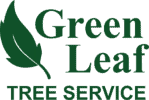How To Choose the Right Auburn Tree Service
Below, we describe several important factors for looking for a tree removal company. These include licensing, services offered, and more.
Vet the Company's Qualifications
Tree service companies should have insurance to protect their workers and customers. Some examples of policies include professional liability, workers' compensation, and general liability insurance. The policies should specifically mention tree work coverage because otherwise, you could be held responsible for any damage or injuries that occur on your property. There aren't mandatory national certification for tree removal, but a company may employ a certified arborist to conduct inspections. An arborist is a specialist who's earned voluntary certifications from the International Society of Arboriculture (ISA). Companies aren't required to have one on staff, but arborists provide the added benefit of training in tree maintenance, preservation, and care.
Get Quotes From Multiple Companies
We recommend requesting quotes from a handful of companies. This lets you compare aspects such as included services, service fees, and timelines to find the best deal.
Confirm the Company Performs Residential Tree Services
Verify that your tree removal company provides residential services. Residential service companies primarily service private homeowner properties and have fewer restrictions than commercial companies. Commercial companies work on commercial properties and therefore need to obey certain local ordinances.
Request a Tree Risk Assessment
A tree risk assessment (TRA) helps minimize the risk of harm to workers or damage to your property. During this process, your tree service professional will visually inspect a tree and its branches to assess the risk of breaking, also called tree failure. TRAs are typically performed by certified arborists. Some companies include a free assessment with their services, while others charge an additional fee. Request a TRA before undertaking any real work.
Ask About Stump Removal
Many tree removal companies can also remove stumps, either by hand or with specialized equipment. This is important because neglected stumps can rot and attract pests and disease. Ask whether your tree removal company includes stump removal with its services. It typically costs from $92 to $678, with the average Auburn homeowner paying about $431.
How Much Does It Cost To Remove A Tree?
Tree removal services cost $420-$1,849, with an average cost closer to $863. Several factors impact final costs, such as tree health, tree size and type, and project size. You'll pay more for emergency services, with costs around $2,219. If you remove multiple trees, the company may charge per acre instead of per tree. The price might also increase if your trees have a higher failure risk and need additional equipment, labor, or safety precautions.
Ready to Get a Quote on Your Tree Project?
Please enter a valid 5-digit zip code!
Frequently Asked Questions About Tree Removal in Auburn
What are common tree issues?
How are tree pruning and tree trimming different?
What are some signs that a tree is dangerous?
Do I need to hire a professional for tree removal?
Is it safe to leave a downed tree on my lawn?
To share feedback or ask a question about this article, send a note to our Reviews Team at reviewsteam@thisoldhousereviews.com.













